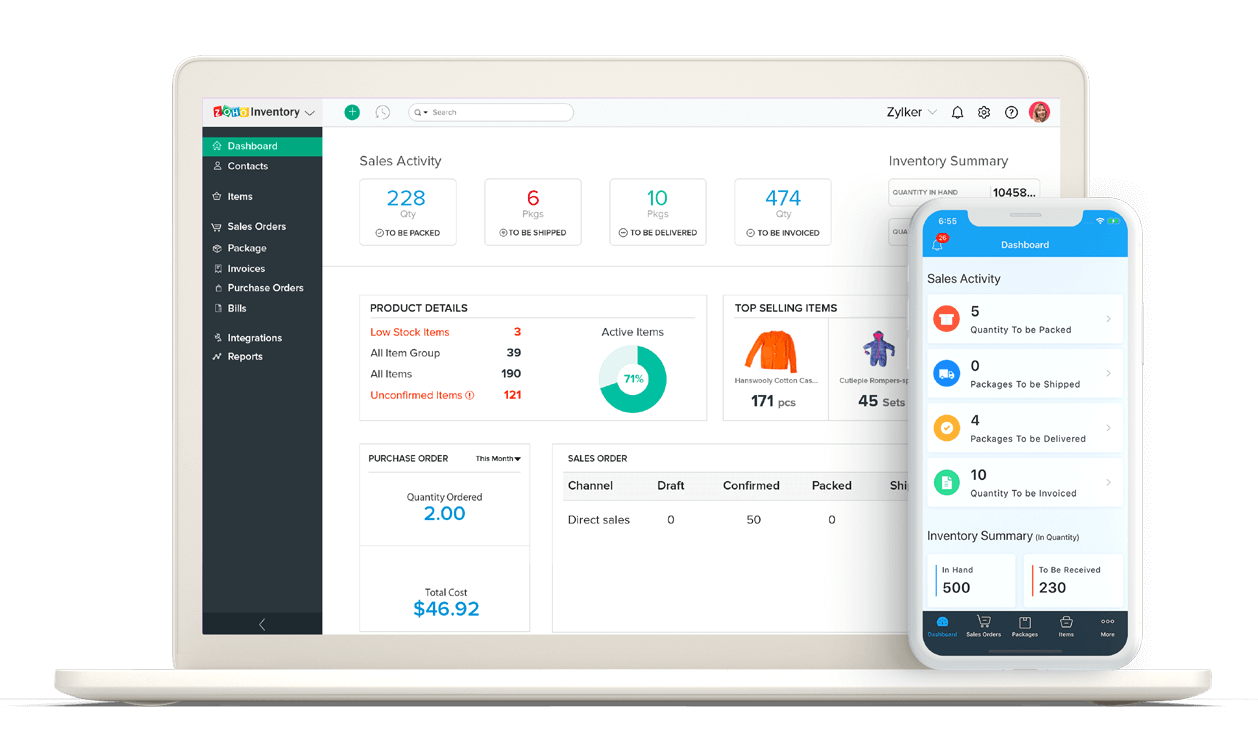Controlling Inventory in your Warehouse
Your inventory items cannot move on their own, and keeping them stocked, stored, and distributed is a time-consuming process. To keep it from crowding out your other business priorities, it’s important to be strategic about how you store and organize your items. You want items' locations to be clearly labeled and easy to spot, grouped with similar or relevant items, and functional for the long term so that you won’t have to move them again. Let’s look at a variety of techniques for labeling, categorizing, and locating your items.
Location labeling
Location labeling is like a home address for inventory items. A house needs an address so that people can guide themselves to it, and location labeling for items serves the same purpose. A location label contains the unique location information of a particular item in your warehouse, and it helps warehouse staff collect the right items from the right place as quickly as possible.
A good location label follows a consistent naming pattern using alphanumeric characters. Each element identifies the item’s location at a different level of detail, starting with the most general location information and ending with the most specific. Depending on the size of the warehouse, the number of areas varies—and the more areas you have, the longer your location labels will be. Here are the most common location areas that you find mentioned in a label:
-
Floor: This is mostly applicable for businesses with large warehouses spanning multiple floors.
-
Zone: Within a floor, there may be areas which are designated for particular items. For instance, the east zone of your second floor may be reserved only for paper products.
-
Aisle: An aisle is a space between two racks. In a typical warehouse, you have many racks in a parallel arrangement, creating aisles between them. To reach the right rack, you first need to be in the right aisle.
-
Rack: A rack is a space which consists of multiple shelves or rows of items. A typical warehouse rack is a tall, broad structure, mostly made of metal, divided into multiple rows and columns.
-
Shelf/Level: Each horizontal row in a rack is called a shelf or level. A shelf might contain all the same items, or it may be divided up into multiple compartments containing different varieties of items.
-
Bay: A bay is a vertical column within a rack.
-
Position/Bin: A bin is the smallest space in this list, and it points at the exact location of the item. The bin location can be a dedicated slot for only one item, or it can be a space holding all items in a particular category. For example, a bin might be allocated for one book by a particular author, or it could be allocated for all thriller books.
Item categorization
The way you categorize items in your warehouse depends a lot on the nature of the product, the industry, and the rate of sales and consumption. To help you decide on an item categorization technique, here’s a quick overview of some of the most widely used ones:
ABC analysis
ABC analysis is one of the most effective ways of inventory control. In ABC analysis, items are classified into three categories based on their contribution to warehouse costs, largely based on the Pareto principle of management. Here’s how items are classified:
-
Category A: Items that constitute 80% of the business’s annual consumption value but account for only 20% of the total inventory.
-
Category B: Items that constitute 15% of the annual consumption value and account for 30% of the total inventory.
-
Category C: Items that constitute only 5% of the annual consumption value but account for 50% of the total inventory.
VED analysis
Vital, Essential, and Desirable (VED) analysis is an important inventory control technique that classifies inventory based on its functional importance. VED analysis is useful in maintaining and assessing stock levels of your inventory items. In this analysis, items are categorized into:
-
Vital: These are top-priority items that customers expect from you consistently. Items under this category need to be maintained at an adequate stock level.
-
Essential: These items are nearly as important as the vital ones, but maintaining a minimum stock of them is enough.
-
Desirable: These items aren’t as important to your customers as the other categories. Keeping an adequate stock of these items is desirable but not mandatory.
HML analysis
This inventory control method focuses on classifying items based on their unit prices. This approach helps you to monitor and gain control of the different items in your inventory. In the HML control technique, items are categorized as:
-
High cost (H): These are items that have a high price per unit.
-
Medium cost (M): These are items that have a moderate price per unit.
-
Low cost (L): These are items that have a relatively low price per unit.
FSN analysis
In this inventory control technique, items are classified based on their rate of consumption. Here, items are categorized as:
-
Fast-moving (F): These are items that have the highest replenishment rate. They move in and out of your inventory rapidly.
-
Slow-moving (S): These are items that move slower through the supply chain and have a slower replenishment rate.
-
Non-moving (N): These are items that move the least, including the dead stock. Replenishment may or may not take place for these items.
FSN analysis helps retailers identify active items and make a decision on whether to replenish the product or not.
SDE analysis
SDE analysis classifies items based on the scarcity of supply. The categories are:
-
Scarce (S): These items often require a longer lead time and are difficult to procure. Usually, items that are imported come under this category.
-
Difficult (D): These items are less difficult to procure than scarce items, but still have a lead time ranging from a few weeks to several months. Usually, these items are available domestically but finding suppliers is still challenging.
-
Easy (E): These items are available locally without any hassle.
Having a clear picture of the items in your warehouse puts you in the driver’s seat. Location labeling tells you where your items are kept, and with the help of item categorization, you know why they’re kept there.
Once your warehouse is organized and logical, your stocking, picking, packing, and shipping operations can all start moving more smoothly.

































